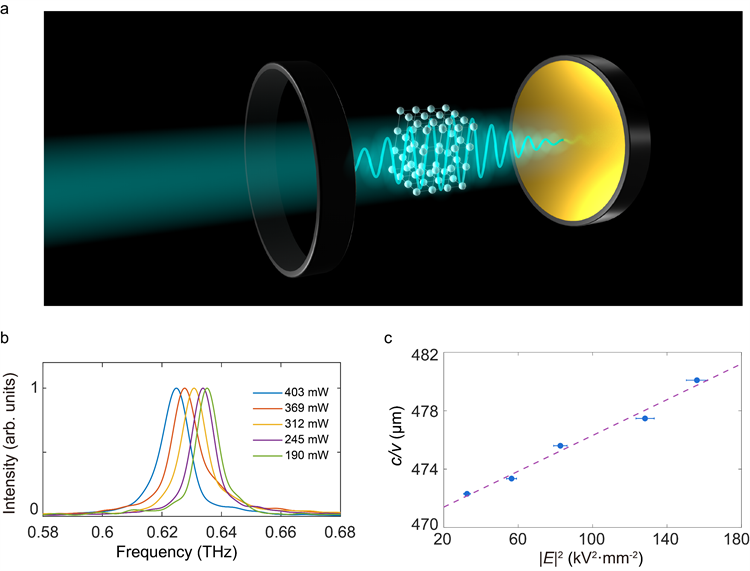NKU Research Team Makes Breakthroughs in the Field of Stimulated Phonon Polaritons and Terahertz Nonlinear Optics
Recently, a research team led by Professors Wu Qiang, Lu Yao and Xu Jingjun at Nankai University has made important progress in the study of stimulated phonon polaritons. The team demonstrated giant Kerr effect of terahertz waves by leveraging the strong coupling between terahertz waves and lattice vibrations in ionic crystals to excite the nonlinearity of stimulated phonon polaritons. This breakthrough offers new possibilities in advancing terahertz optical communications, optical computing, and terahertz optical chips for next generation applications. The research results were published in the world-renowned academic journal Light: Science & Applications under the title “Giant Kerr nonlinearity of terahertz waves mediated by stimulated phonon polaritons in a microcavity chip”.
The Kerr effect is a core mechanism for many photonics devices and applications. However, research on the Kerr effect in the terahertz band is still in its early stages, with only a limited number of materials’ Kerr coefficients and their physical mechanisms having been studied and explored. Given the significant demands for terahertz optical communication, optical computing, practical photonics devices, among others, the primary bottleneck that needs to be broken is how to achieve a strong Kerr effect in readily available materials.
To meet these pressing demands, a research team from Nankai University exploited the strong coupling of terahertz waves with lattice vibrations in the ionic crystals to trigger the nonlinearity of stimulated phonon polaritons, which led to a giant Kerr nonlinear effect in the terahertz regime. To study this effect, the research team designed and fabricated a terahertz Fabry-Pérot microcavity on a lithium niobate planar waveguide using femtosecond laser direct writing technology and observed that the resonance peaks of the microcavity shifted in response to the changes in pump power. Such frequency shifts were attributed to the modulation of the effective refractive index of the microcavity by the terahertz Kerr effect. The research team established a frequency shift model and extracted the stimulated-phonon-polariton-mediated terahertz Kerr nonlinearity coefficient, which is four orders of magnitude higher than that of lithium niobate in the visible regime. Moreover, by applying the nonlinear correction to the Huang-Kun equation that describes phonon polaritons, the research team constructed a theoretical model of the terahertz Kerr effect of stimulated phonon polaritons, and the theoretical calculations are consistent with the experimental results.
The method of using stimulated phonon polaritons to achieve the terahertz giant Kerr effect is not limited to lithium niobate and is applicable to other ionic crystals in general. This approach promises tremendous potential in practical applications, which provides an impetus for future terahertz communication, optical computing and practical terahertz photonics devices, and opens a new avenue for physical, chemical, and biological systems based on the terahertz Kerr effect.

Frequency shift triggered by the Kerr effect in single-mode microcavity: (a) Conceptual diagram of stimulated phonon polaritons in microcavity. (b) Frequency spectrum in the microcavity at different excitation powers. (c) The correspondence between the resonance frequency of the microcavity and the peak value of the terahertz wave electric field.
Nankai University is the primary institution involved, with doctoral student Huang Yibo as the first author, and associate Professor Lu Yao, Professor Wu Qiang, and Professor Xu Jingjun as co-corresponding authors.
Link: https://doi.org/10.1038/s41377-024-01509-y
(Edited and translated by Nankai News Team.)









